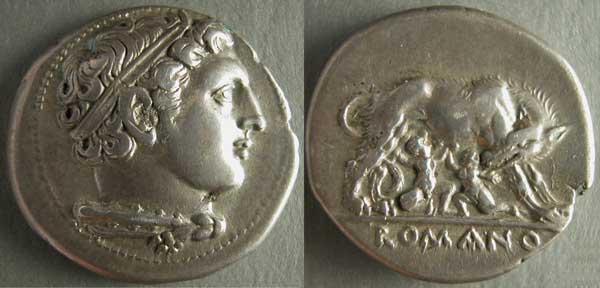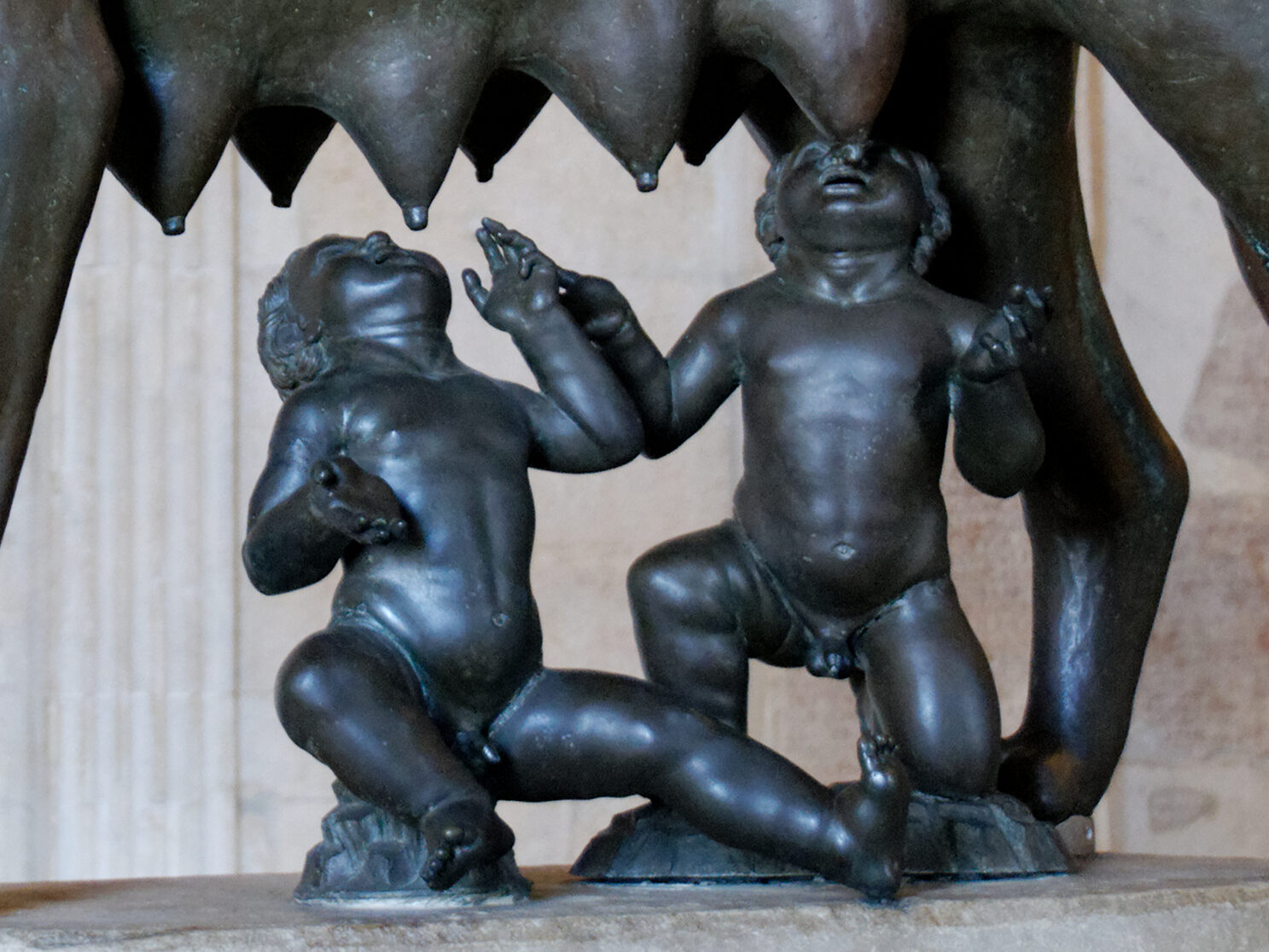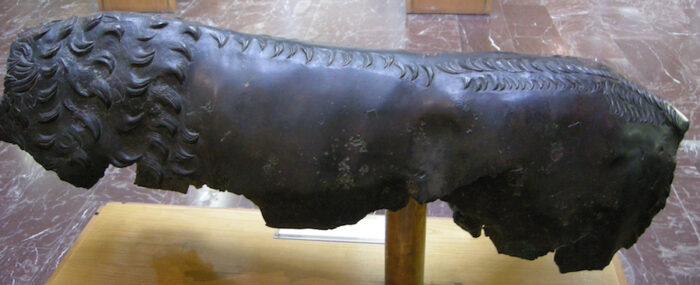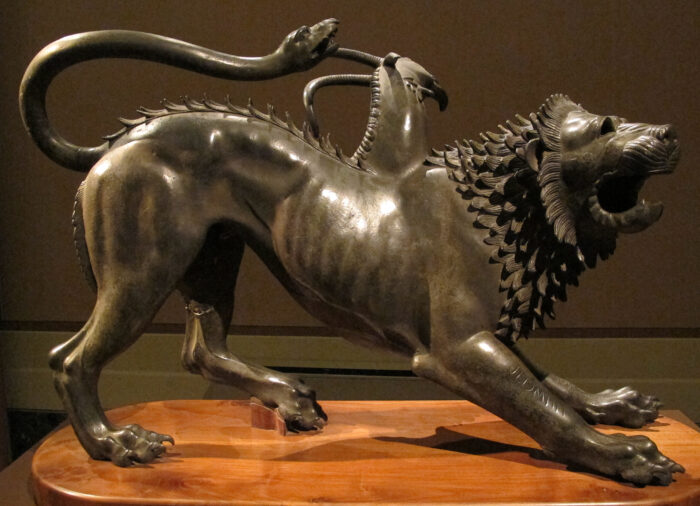Hello dear one,
Allow me to introduce myself! I am the Capitoline She-Wolf, Rome’s beloved protector and mother figure. I’m named after the museum I live in, the Capitoline Museum in Rome.
The Legend
I play a crucial role in the founding of Rome, as I nurse and care for the twins Remus and Romulus (the latter being the founder of Rome) after they are left by the Tiber River to die. I eventually give the boys to Faustulus, a shepherd, so he can raise them. Obviously, he didn’t do a great job with their morals considering Romulus killed his brother over an insult, but that’s irrelevant.
I have been recognized from the mythology as a symbol of strength, fertility, protection, and Roman power since the 3rd century B.C.E. They loved me so much that they put me on their coins!

My Physical Form
My body has held up quite well over the centuries! I’m made of bronze, I’m lean, and I’m just under life-size. People make fun of my disproportionately long neck, but it doesn’t bother me. My fur has an intricate S-shaped curl pattern, which begins with a row of decorative beads around my face. While my expression may seem fearful thanks to my eyebrows, I promise it’s not. I’m a protective mother who is prepared to go to great lengths for her children.

Speaking of the children, they’re a new addition! Made in the 1500s during the Renaissance, my babies were gifted to me to make it clear that I’m the Roman She-Wolf.

A Woman of Mystery
I have many secrets; no one alive today knows my original name, purpose, or when I was made. In this way, I’m very similar to the Great Sphinx, as no one knows her actual name or purpose either.
My age has caused a serious kerfuffle over the last fifteen years. The art world relentlessly debates whether I’m ancient or medieval… maybe you can figure it out? I will provide you with all the essential information first so that you can make an informed decision. Price is Right rules apply, whoever guesses the closest year without going over wins!
The Original Theory: 5th Century Etruscan Sculpture
It was long believed that I’m an ancient Etruscan sculpture, dating back to the 5th century. Rome was just a small city that probably didn’t idolize me yet, so I would’ve been made for the Etruscan people. That being said, The Romans had strong trade connections with surrounding peoples, so they easily could have obtained me through trade in later years. The Romans also could have plundered me as they surpassed the Etruscans in military might, repurposing me as they did with much of Greek art. German art historian Johann Joachim Winckelmann first labeled me as Etruscan based on my fur, and those who support his decision agree that I’m stylistically similar to other Etruscan sculptures.


Evidence that I’m Etruscan:
- The composition of the bronze I’m made of is comparable to those of Etruscan bronzes (9.2% tin and 5% lead)
- The materials I’m made of all came from Rome and Sardinia
- The mines in Sardinia that produced copper are only known to have been exploited in ancient times
- I have been “manhandled” many times over the centuries, so carbon dating results might be altered by substances that contaminated the bronze long after my creation
The New Theory: 11th-12th Century Medieval Sculpture
New theories about me emerged in the 1990s when I was being restored, but it wasn’t until Anna Maria Carruba’s report in 2006 that they were taken seriously. The report resulted in an additional 20 studies being done at the University of Salerno, and here are the results…
Evidence that I’m Medieval:
- The bronze could’ve been melted down and reused, a common medieval practice
- I was made using the lost-wax method, and Carruba discovered that I was made in 1 piece
- In antiquity, bronze castings were made in multiple pieces and fused together. Single-piece casting is a strictly medieval technique, used to produce objects like bells and cannons that required a rigid structure to function properly
- Carruba also argued that the marks on the surface, precisely the S-shaped hair, are more typical of medieval artists
- Thermoluminescence dating tests were performed on my clay core (5 samples taken)
(diagram of sample locations)
- The clay is what dates me since it’s impossible to date a metal
- Results revealed with an accuracy of 95.4 % that the sculpture was crafted between the 11th and 12th century
- Radiocarbon testing connects the clay core to the 11th or 12th century as well
This theory was a culture shock for Italians. Many of them reject the evidence, as they cannot fathom that I was made after the Roman Empire ended. I embody the story of their creation, the glory of their past, and everything the empire was. The fact that the Ancient Romans might not have had me to depict the mother wolf is jarring to them.
Cast Your Vote
So what do you say, my dear? How old am I?
(Remember, when guessing a lady’s age, it’s always polite to air on the younger side)
Lindsay Hess is a freshman at Colgate University. She loves art and plans to study it in some capacity. She also has an interest in Greek and Roman mythology, which is why she chose to learn about the Lupa statue.
